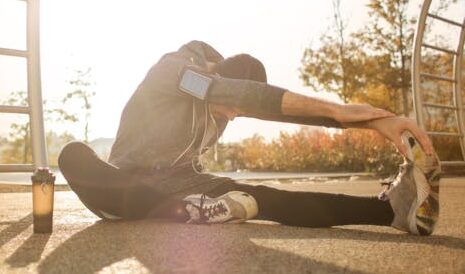
Uphill hiking can challenge even the most seasoned hikers. But learning how to hike uphill efficiently without getting tired can make your climbs more enjoyable and less exhausting.
Inclines, elevation gain, and trail terrain impact the severity of the ascent. While hiking efficiently by considering pace, equipment, hydration, breathing and technique prevent muscle fatigue. This guide covers the essential techniques, gear adjustments, physical conditioning, and mental strategies to help you ascend confidently and sustainably.
1. Maintain a Steady Pace
Avoid the common mistake of starting too fast. Establish a rhythm that matches your aerobic threshold—a pace where you can still hold a conversation. A steady, moderate effort helps conserve energy and prevents burnout during prolonged climbs.
Tip: Think of your uphill pace like gears on a bike—stay in a low gear and spin steadily.
Learning how to pace yourself can make all the difference—Backpacker Magazine’s tips for uphill hiking offer additional strategies for conserving energy.
2. Adjust Your Backpack for Proper Load Distribution
A poorly adjusted backpack can shift weight to your shoulders, leading to fatigue. Use the hip belt to transfer most of the load to your hips. Adjust the shoulder straps and load-lifter straps regularly to stay comfortable and balanced.
Pro Tip: Load heavier items near the center of your back to maintain stability. You can find a comprehensive guide on how to fit a backpack here.
3. Shorten and Vary Your Stride
Take smaller, more controlled steps when hiking uphill. Short strides help conserve energy and reduce strain on your calves. Occasionally vary your gait to engage different muscles and prevent overuse. This variation helps prevent stiffness and spreads the workload across your body, ensuring a more comfortable hike. If you’ve ever sat at a desk for too long and felt tension building up in your shoulders or lower back, this same principle applies to your legs while hiking. Mixing up your gait keeps things fluid.
Example: Alternate between heel-to-toe steps and toe pushes for varied muscle activation.
4. Incorporate Dynamic Stretching
Stretch before, during and after your hike to reduce muscle stiffness and enhance performance. Focus on calves, hamstrings, quads, and hip flexors. This improves circulation and reduces the risk of cramps. Not only will this help you recover faster, but it will also improve your overall endurance on long hikes. A few minutes of light stretching can save you from that painful post-hike tightness.
Personal Note: I once skipped a post-lunch stretch and suffered severe calf cramps—lesson learned! My guide to stretching is a must read.

5. Take Strategic Micro-Breaks
Instead of long rests that cool your muscles, take 30-60 second standing breaks to catch your breath without stiffening up. Use this time to shake out your legs or do a quick quad stretch.
Why it works: Staying warm prevents lactic acid buildup and keeps your momentum.
6. Sync Your Breathing with Movement
Coordinate your breath with your stride—for example, inhale for two steps, exhale for two. Deep belly breathing supplies more oxygen, helping to delay fatigue and maintain focus.
Bonus: Rhythmic breathing also helps regulate heart rate and reduce stress.
7. Master the “Rest Step”
Popular among mountaineers, the rest step involves briefly pausing with your back leg straightened and weight shifted to your bones rather than muscles. It conserves energy on steep inclines. This brief rest gives your muscles a break, conserving energy for the long haul.
How to do it: Step forward, lock your rear knee straight, and pause before the next step.
Mountaineers swear by the rest step for long ascents—SummitPost explains how to do it with clear, step-by-step instructions.
8. Zigzag on Steep Slopes
Rather than tackling the incline head-on, take diagonal or switchback paths. This flattens the angle and distributes effort more evenly across muscles and reduces strain.
Tip: Even if no trail zigzags are present, you can create your own pattern on wide paths. This reduces the gradient and makes the climb less punishing. It’s a great technique for steep terrain when the direct route seems too exhausting.
9. Stay Mentally Engaged
Mental fatigue often precedes physical exhaustion. Use mental strategies like setting small goals, counting steps, or focusing on trail features. Listening to nature sounds or music can also help by distracting your mind from the physical challenge and can make those tough sections feel shorter.
Example: Aim for the next tree or boulder instead of fixating on the summit.
10. Use Trekking Poles Effectively
Trekking poles help distribute effort to your arms, reduce knee strain, and improve balance. Adjust them so your elbows form a 90-degree angle. On climbs, plant them slightly behind your feet for forward propulsion. Trekking poles aren’t just for the descent—they can be an uphill hiker’s best tool for maintaining balance and reducing leg fatigue. You can read my guide on trekking poles here.
Tip: Use wrist straps properly to avoid hand fatigue.
11. Hydrate Smartly
Avoid carrying excessive water that adds weight. Instead, use a hydration bladder or a lightweight filter, such as those by Sawyer or LifeStraw, to refill from natural sources. Add electrolytes to replace what you lose in sweat. Understanding the importance of hydration is imperative. It’s explained in this post.
Smart Hack: Sip water every 15-20 minutes rather than gulping during breaks.
12. Set Mini Landmarks to Stay Motivated
Break the hike into smaller segments. Celebrate reaching trail markers, big rocks, or views. This keeps your mind focused and morale high, making the ascent feel less overwhelming and keeps you motivated.
Why it works: Achievable goals keep your brain engaged and boost momentum.
13. Try the French Step on Steep Terrain
Though typically used on snow, the French step or French technique—flat-footed diagonal steps—can reduce calf fatigue even on dry but steep paths. It maximizes surface contact and improves stability.
Note: Great for hikers with weak ankles or tight calves. It could work for you. Here’s how it works:
Flat-Footing: In the French technique, you place the entire sole of the foot on the slope crampon points. This allows for maximum contact and better balance.
Alternating Feet: Each foot is placed at an angle across the slope, minimizing calf strain. This stance is helpful for traversing or moving diagonally across a slope.
Minimal Use of Front Points: By relying less on the front points of the foot, less strain is put on the calves and more sustainable for long ascents.
Glossary of Terms
- Aerobic Threshold – The level of exercise intensity at which your body starts to use more carbohydrates than fat for fuel. Staying below this threshold helps conserve energy on long hikes.
- Load-Lifter Straps – Adjustable straps on your backpack that pull the top of the pack closer to your body, improving balance and reducing shoulder strain.
- Diaphragmatic Breathing – Also called belly breathing, this technique involves breathing deeply into your diaphragm rather than shallowly into your chest, increasing oxygen intake.
- Rest Step – A mountaineering technique where you momentarily pause with your back leg straight to shift weight onto your bones rather than your muscles, conserving energy on steep climbs.
- Switchbacks – Zigzag paths up steep terrain that reduce the gradient and make climbing more manageable.
- French Step (Technique) – A walking method used on moderate snow slopes or steep terrain, involving placing your foot flat and angled across the slope for better balance and reduced calf strain.
- Electrolytes – Minerals like sodium, potassium, and magnesium that are lost through sweat and help maintain muscle function and hydration.
- Micro-Breaks – Short standing pauses during exertion that keep muscles warm and oxygenated without cooling down completely.
Final Thoughts on Hiking Uphill Efficiently
Hiking uphill efficiently is about more than just fitness—it’s a mix of smart techniques, proper gear use, pacing, and mindset. With these tips in your hiking toolkit, you can tackle even the steepest trails with confidence and minimal fatigue.
Have a favourite uphill hiking trick? Share it in the comments below!

This article is an excellent guide for anyone looking to tackle uphill hiking with confidence and efficiency! The practical tips for pacing, breathing, and posture are especially helpful for both beginners and seasoned hikers. I appreciate how the piece balances technical advice with encouragement, making uphill hiking feel achievable rather than daunting.
The emphasis on conserving energy and staying mindful of your body’s needs is a standout. Suggestions like shortening your stride and maintaining a steady rhythm are not only practical but also align well with the idea of hiking as a mindful activity. Additionally, the hydration and nutrition tips are a great reminder of how preparation off the trail impacts performance on it.
I’m curious—do you have any specific recommendations for building endurance for uphill hiking during the off-season? Also, how would you suggest handling steep inclines for those who may not have access to hilly terrain for practice?
Thank you for this comprehensive and motivating guide!
Hi Alan, thanks for the comments. I don’t have an off season, I hike all year round but if you don’t and don’t have hills to walk in, steps are your next best option. If you can find somewhere outside with steps or lif you live in an apartment with an internal staircase like I do. I’m on the 8th floor and if it’s raining and I can’t get out I go up and down the stairs. A gym with a step machine is another option. Doing step ups also gets the heart rate up and mimics the stepping action.
Such a helpful guide! Hiking uphill can be so challenging, but your tips make it seem much more manageable. I love the advice on pacing and using proper techniques to conserve energy—it’s a game-changer. Can’t wait to try these out on my next hike. Thanks for sharing these great tips!
Hi Randi. Thanks for you comments. Let me know how you go Lyn
Hiking uphill has always been one of my favorite challenges on the trail, and this guide nails some great strategies for making those climbs more enjoyable and efficient. Personally, I’ve learned the hard way about the importance of pacing and stretching—one steep ascent left me with sore calves for days because I skipped a pre-hike stretch! Keeping a consistent pace and taking short, frequent breaks has been a game-changer for me, especially when tackling long hikes.
One tip I’d like to add is the power of visualization—breaking the trail into smaller, achievable milestones really helps me stay motivated. It’s great to see techniques like the Rest Step and zigzagging mentioned, as they’ve saved me on more challenging terrains. Overall, these tips are practical and easy to incorporate into any hiking routine. Happy trails to anyone giving them a try—you’ll feel the difference!